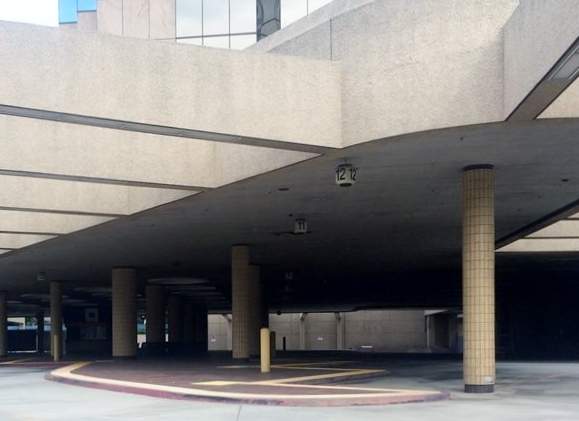Santa Ana, CA (October 5, 2017) — Today, the County of Orange commemorated the one-year anniversary of its first County homeless shelter, the Courtyard Transitional Center in Santa Ana. Board of Supervisors Vice Chair Andrew Do, First District, who was instrumental in bringing the Courtyard to fruition, visited with staff and residents at the shelter to signify the milestone.
“The Courtyard was a response to a homelessness crisis in the Santa Ana Civic Center, and it has made a significant impact on the lives of the individuals who have taken advantage of the resources provided,” said Supervisor Do. “We have seen tremendous success in the last 12 months, with more than 153 people from the Courtyard connected to housing and more than 125 who are employed. I have no doubt that we will continue to see people coming to the Courtyard as the first step in ending their homelessness.”
The Courtyard Transitional Center (Courtyard) is a 400-bed shelter located at the former Santa Ana Transit Terminal that opened on October 5, 2016. Through contracts with The Midnight Mission and Kingdom Causes, Inc., also known as City Net, the Courtyard provides amenities like meals, showers, restrooms, laundry service, and intensive case management to people experiencing homelessness in the Civic Center and surrounding area. Annual operating costs for the shelter were $1.4 million for the first year, and will increase to $1.65 million for the second year under a renewed contract with The Midnight Mission providing enhanced case management services.
Since opening, the Courtyard has provided 129,145 shelter bed-nights, with an average of 356 individuals staying at the Courtyard per night. More than 201 community service groups have provided 329,707 meals to Courtyard residents in the last year, which translates to $982,526 in meal donations. Additional data can be found in the attached infographic “The Courtyard By The Numbers.”
“It is with the support of the community through volunteering and providing meals that we are seeing the impact the Courtyard has made,” said Board of Supervisors Chairwoman Michelle Steel, Second District Supervisor. “We are proud that other counties across the nation are looking to replicate the model in their community.”
The County has opened two shelters in the last year- the Courtyard and Bridges at Kraemer Place in Anaheim. While the Courtyard is a low-barrier emergency shelter, Bridges at Kraemer Place is designed to be a facility where clients are referred by nonprofit agencies and prescreened before entering the shelter for a stay of up to 180 days. During that time, onsite assessments will connect the individual to employment and housing navigation services.
“Along with the Courtyard, the County opened Bridges at Kraemer Place to bring an additional 100 beds online this year,” said Supervisor Todd Spitzer, Third District. “When the second phase of Bridges at Kraemer Place is completed in 2018, we will add another 100 beds and enhanced services.”
Providing shelter is just one part of a comprehensive system of care addressing homelessness, which the County is focused on developing together with cities, nonprofits, businesses and the community.
Supervisor Shawn Nelson, Fourth District, said, “The County has taken the lead in providing tangible shelter and resources for homeless. Moving forward will require partnership among the County and the cities. We all have something important to contribute.”
In addition to the Courtyard and Bridges at Kraemer Place, the County operates two Armory Emergency Shelters. The seasonal armory program is operated by Mercy House, Inc., providing up to 400 beds per night at the California National Guard Armories in Fullerton and Santa Ana. The program provides shelter along with a meal, shower, a wide variety of supportive services and a safe place to sleep.
“In June, I worked with the Board to dedicate $5 million from Mental Health Services Act funding towards permanent supportive housing for homeless individuals suffering from mental illness. Providing stable housing with supportive services for the most medically fragile population reduces homelessness, leads to greater health outcomes and decreases the need for costly emergency medical services,” said Supervisor Lisa Bartlett, Fifth District. “The Courtyard serves an important bridge in the system of care where individuals can receive the services and placement needed to make a difference.”
To learn how the County is working with cities and community-based organizations to build a system of care to continually improve the countywide response to homelessness, visit the County of Orange’s website at www.ocgov.com/homelessness.
Click here to view full-size infographic.
